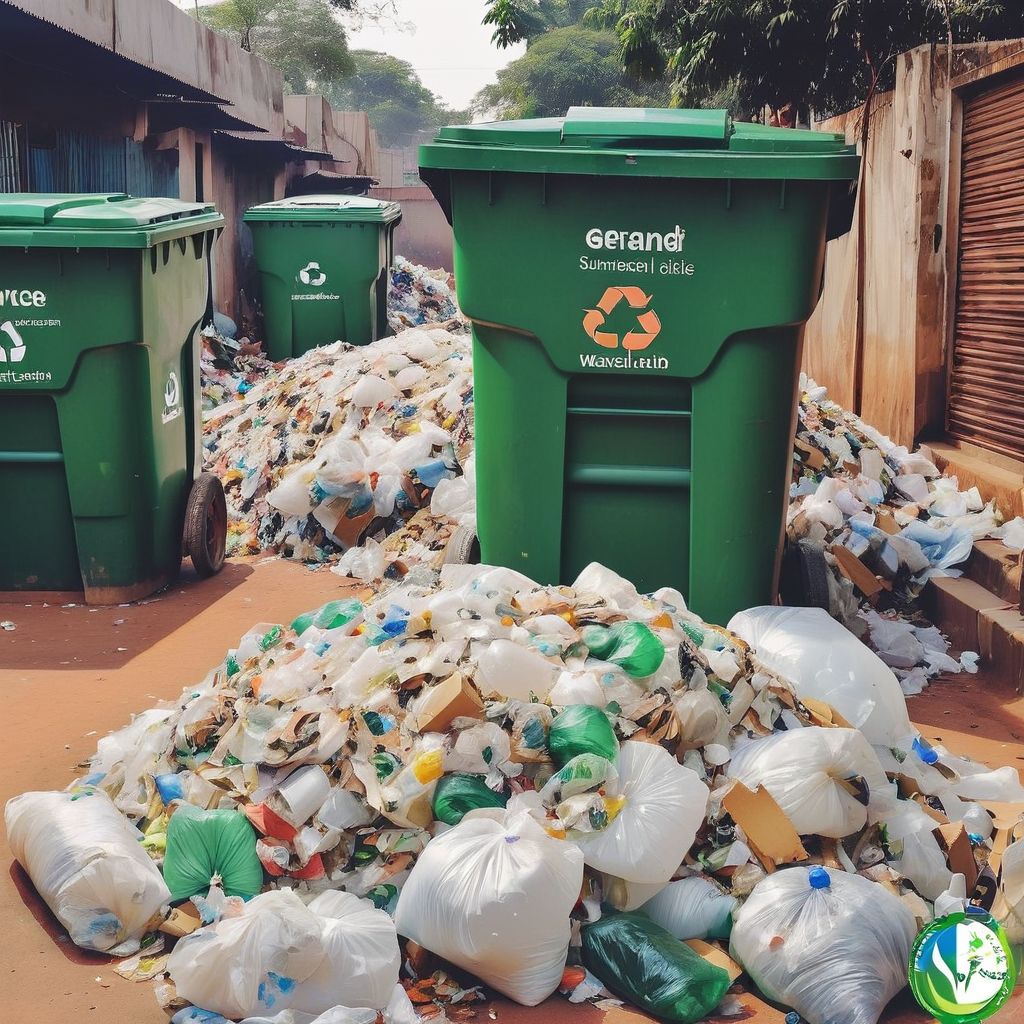Circular Economy (CE) emerged in the 1970s from reducing the consumption of inputs for industrial production, but it proved to be potentially applicable to any resource. CE proposes a change in the “extraction-production-disposal” paradigm of linear economy (LE) through the possibility of making human activity more resilient using the natural cycle model. CE is based on:
- the design of manufactured products with added value and maximum use in longer life cycles;
- the creation of versatile products with different uses in different periods of their useful life, thus guaranteeing the reuse of a single good;
- the restitution of solid waste to the industrial sector in an orderly manner, where the cost of secondary raw materials from recycling is competitive in the market;
- a systemic approach to supply chain management, evaluating the interconnections between the energy produced, the extracted material, and the natural environment (Lieder and Rashid 2016).
The circular economy is closely intertwined with sustainability, as evidenced by its alignment with key Sustainable Development Goals (SDGs). Among these, SDG 12 stands out as the most directly related, as the fundamental principles of the circular economy, such as waste minimization and resource efficiency, directly contribute to fostering sustainable consumption and production patterns. Additionally, SDG 6 is intricately linked, as circular economy practices like water recycling and resource-efficient production methods can significantly reduce water consumption and pollution, thus promoting clean water and sanitation. Again, SDG 7 benefits from the circular economy’s emphasis on reducing reliance on virgin materials, leading to lower energy consumption associated with extraction and manufacturing processes, thereby facilitating a transition towards affordable, clean energy. Furthermore, the circular economy supports SDG 15 by advocating for sustainable resource use, which helps conserve ecosystems and biodiversity, thus minimizing land degradation often associated with extracting virgin materials. As we delve into discussions surrounding the circular economy, it becomes evident that effective waste management serves as a cornerstone of the circular economy, facilitating the transition towards a more sustainable and resource-efficient society. By minimizing waste generation, maximizing resource recovery, and promoting reuse and recycling, waste management practices directly contribute to the circular flow of materials within the economy.
A system designed for effective waste management is crucial to achieving a circular economy. Such a system will embody the least generation of waste and the highest usage of resources possible. One commonly observes that such results happen with all sorts of processes for the management of waste, including recycling, composting, etc., that bring the materials out of landfills and convert them back into capable resources. In this regard, according to (Kirchherr and Hekkert 2017), it is on this “closing of the loop” background that a circular economy is premised, where resources stay in use for as long as possible, squeezing out the maximum value from them while limiting as far as possible the exploitation of virgin materials. In a Minderoo Foundation report (Charles et. al. 2023), it was claimed to have numerous environmental benefits since much of today’s manner of resource extraction through mining and deforestation, to name but a few went to the extent of being normally terrible and even potentially catastrophic to the environment. Also, optimized waste management stimulates innovation in such processes as recycling technologies and product design (Ghiat et. al. 2022). As the perception of waste changes to that of a valuable resource, manufacturers have increased motivation to develop products with easier disassembling, reparation, or reuse (Kirchherr and Hekkert 2017) Thus, cooperation between waste management and manufacturing sectors generates drivers for further promotion of the circular economy through the stimulation of a closed-cycle development process.
The other set of benefits offered by the concept of a circular economy as far as the management of waste is concerned pertains to economics. Studies have shown that proper management of waste generates specific job opportunities in collection, sorting, and processing facilities. A circular economy widens options for remanufacturing and upcycling industries besides creating those already mentioned. It not only decreases landfill dependence but also builds new economic opportunities and sustainability for the future. India has started different waste management programs to reduce the problems of sanitation and environmental disasters. The Swachh Bharat Mission started in 2014, focuses on the installation of toilets in every household, the separation of waste generated, and the promotion of door-to-door collection following the steps of solid waste management procedures (Ministry of Housing and Urban Affairs, mohua.gov.in). Also, the Municipal Solid Waste (Management and Handling) Rules of 2000 support waste segregation at source and composting, as well as processing of organic wastes so that solid waste is managed effectively (Central Pollution Control Board, cpcb.nic.in). Now, the Waste-Wise Cities Mission started by NITI Aayog documents the ways of creating “garbage-free” cities through efficient collection and removal of waste, followed by resource recoveries (NITI Aayog, niti.gov.in). Besides, EPR policies are put in place to make the producers of these products responsible for managing the products at their end-of-life stage for environment-friendly design as well as collection systems (Confederation of Indian Industry, cii.in). Additionally, a major proportion of the cities of the nation have developed PPPs for solid waste management; for example, the DWM has been successfully managing the municipal solid waste of the city of Delhi with the assistance of numerous private companies (Indian Brand Equity Foundation, www.ibef.org). Also, India has taken a giant leap against plastic pollution by banning single-use plastics. Already, the Swachh Bharat Mission has put great focus on reducing the use of plastic and finding alternatives for the same (Ministry of Housing and Urban Affairs, mohua.gov.in.)
The impacts or outcomes of the above-mentioned movements are stated below. The Swachh Bharat Mission, or SBM, has now been institutionalized in the domain. Massive wastewater generation was estimated at 154,090 tons daily, besides considerable coverage under the door-to-door collection of waste in urban areas. Processing rates, however, were low, as only 30–50% of waste was successfully processed. Similarly, the Municipal Solid Waste Rules of 2000 speak about the segregation of waste, but reportedly, only less than 30% of waste segregation at source has occurred. PPPs, like DWM-PPP, are also proving themselves; the capacity for processing has increased, and waste diversion to landfills has occurred. It can be gathered from all these that the scenario of waste management on the Indian subcontinent over the last few years has changed significantly. According to Statista, an intelligence platform comprising various reports from different fields, the country has processed 76% of the total generated for the financial year 2023, compared to less than 20% in 2016. Such unprecedented improvement has resulted from a set of programs by the government and private sectors. These collective efforts are seen in a very firm determination towards the sustainable practices of waste management—a push towards a cleaner and greener India.
The charts below show the composition of solid waste produced in India, how much of it is processed and the different kinds of waste treatment plants in India.

Some of the most active, innovative startups in India have also become champions of waste management and the circular economy. One such example is 3R Zero Waste, which envisions a world without waste and sets its mission as establishing recycling units across the landmass to ensure a circular economy. In this respect, the startup is guided by things like 24/7 innovation, safety, health, the environment, and sustainability. 3R Zero Waste offers everything from e-waste recycling to solid waste management and environmental consulting, among other services. On one hand, 3R Zero Waste follows all the principles set by its innovative approach to service and commitment towards sustainability, which play a significant role in sorting out Indian waste management issues. On the other hand, it works towards building a healthier environment and an environmentally conscious society.
In brief, the concept of a circular economy indeed offers an approach to managing resources sustainably. The underlying and most important element in this regard has to be efficient waste management. Thanks to the joint efforts of government programs, the business sector, and creative startups like 3R Zero Waste, India has taken very bold steps in the direction of sustainable waste management and the circular economy. Despite the problems faced in the area of waste management, which includes scalability issues, this country has made very remarkable progress by hitting high percentages of garbage that is processed, coupled with the emergence of promising companies willing to contribute their share in achieving ecological sustainability.
References
- Ghiat, I., Pradhan, S., Govindan, R., Mackey, H. R., McKay, G., & Al-Ansari, T. (2022). Biochar: a sustainable approach of green waste management in agricultural practices under controlled microclimate. Chemical Engineering Transactions, 92, 331-336.
- Kirchherr, J., Reike, D., & Hekkert, M. (2017). Conceptualizing the circular economy: An analysis of 114 definitions. Resources, conservation and recycling, 127, 221-232.
- Lieder, M., & Rashid, A. (2016). Towards circular economy implementation: a comprehensive review in context of manufacturing industry. Journal of cleaner production, 115, 36-51.
- Charles, D., Kimman, L., Laidler, S., Campbell, L. and Sorensen, C. (2023). PLASTIC WASTE MAKERS INDEX 2023. Basis of Preparation. https://cdn.minderoo.org/content/uploads/2023/02/03171753/PWMI-2023-Basis-of-Preparation.pdf (accessed on Jun 28, 2024).
Online resources
- https://cpcb.nic.in/annual-report.php
- https://www.niti.gov.in/annual-report
- https://www.statista.com/topics/5586/waste-management-india/#topicOverview
Author: Christeena M Sunesh
About the Author: Student of MBA 09
#WasteManagement #Sustainability #ZeroWaste
#SustainableIndia #GreenFuture #commsclub
#CircularEconomy #EcoFriendly #iimbg
#IndiaGoesGreen #RecycleReuse



